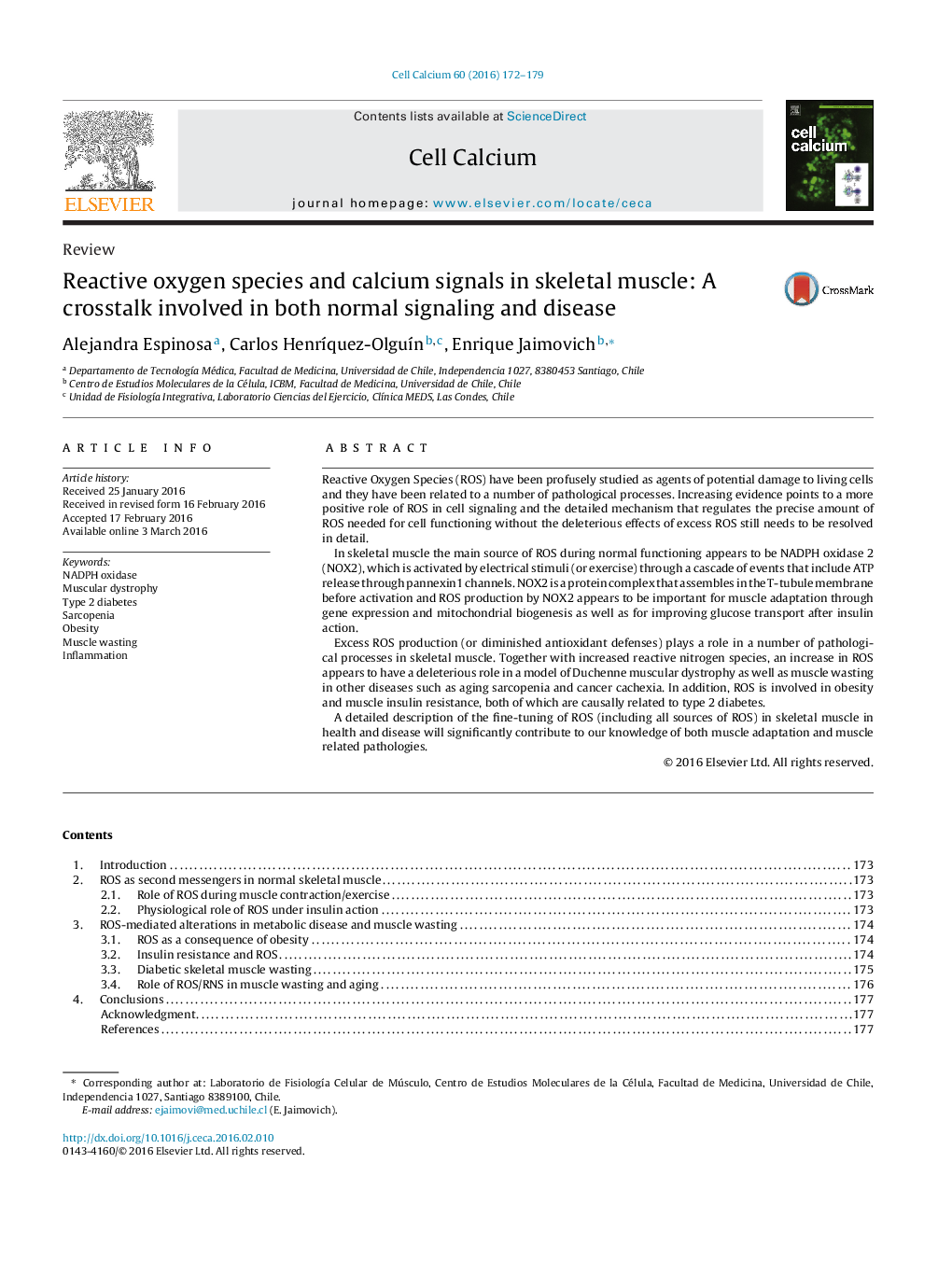| کد مقاله | کد نشریه | سال انتشار | مقاله انگلیسی | نسخه تمام متن |
|---|---|---|---|---|
| 5530606 | 1401753 | 2016 | 8 صفحه PDF | دانلود رایگان |
- ROS are second messengers in skeletal muscle.
- NADPH oxidase 2 (NOX2) in the main source of ROS in skeletal muscle.
- Exercise induces ROS production in skeletal muscle.
- Excess ROS production can be a consequence of obesity and insulin resistance.
- Altered calcium handling and ROS production could explain muscle wasting.
Reactive Oxygen Species (ROS) have been profusely studied as agents of potential damage to living cells and they have been related to a number of pathological processes. Increasing evidence points to a more positive role of ROS in cell signaling and the detailed mechanism that regulates the precise amount of ROS needed for cell functioning without the deleterious effects of excess ROS still needs to be resolved in detail.In skeletal muscle the main source of ROS during normal functioning appears to be NADPH oxidase 2 (NOX2), which is activated by electrical stimuli (or exercise) through a cascade of events that include ATP release through pannexin1 channels. NOX2 is a protein complex that assembles in the T-tubule membrane before activation and ROS production by NOX2 appears to be important for muscle adaptation through gene expression and mitochondrial biogenesis as well as for improving glucose transport after insulin action.Excess ROS production (or diminished antioxidant defenses) plays a role in a number of pathological processes in skeletal muscle. Together with increased reactive nitrogen species, an increase in ROS appears to have a deleterious role in a model of Duchenne muscular dystrophy as well as muscle wasting in other diseases such as aging sarcopenia and cancer cachexia. In addition, ROS is involved in obesity and muscle insulin resistance, both of which are causally related to type 2 diabetes.A detailed description of the fine-tuning of ROS (including all sources of ROS) in skeletal muscle in health and disease will significantly contribute to our knowledge of both muscle adaptation and muscle related pathologies.
Journal: Cell Calcium - Volume 60, Issue 3, September 2016, Pages 172-179
